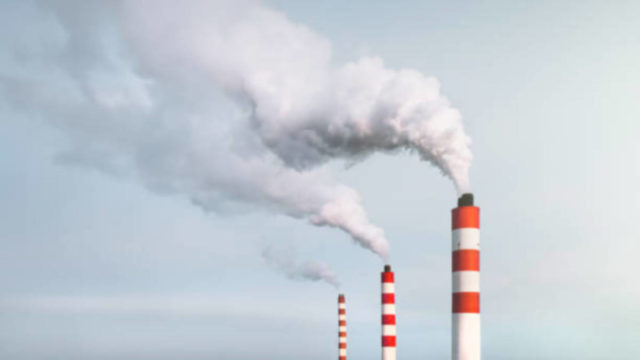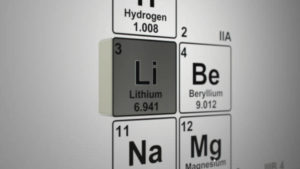- WA’s coal-fired power stations to shut down by 2030 as uptake of renewables soar
- Household electricity costs could have increased to more than $3,000 per year
- BP has bought 40.5% stake in the Asian Renewable Energy Hub (AREH) in WA’s Pilbara region
Western Australia’s State-owned coal power stations will shut down by 2030, as the continued uptake of rooftop solar and renewables forces changes in the energy system.
These pressures force Synergy to offload excess power generated during the day at a loss, and add additional maintenance and generation costs, which are ultimately borne by taxpayers.
To address this, the State’s energy system will embark on a transition to a greater use of renewables, beginning with the closure of the Collie Power Station in late-2027 and Muja D in late-2029.
The coal-fired power stations will be replaced with an estimated $3.8b investment in green power infrastructure in the Southwest Integrated System (SWIS) for things such as wind generation and storage, to ensure supply stability and affordability.
This comes as new analysis by global energy think tank, Ember, showed Australia had the highest coal power emissions per capita among the world’s major economies in 2021, topping the list as the world’s worst polluter in both the G20 and OECD.
Next step: model for the phasing out of gas
In an interview with Stockhead, Greenpeace head of clean transitions Jess Panegyres said while this is a win for environment, it is also a win for Western Australia.
“It is a clear plan with clear dates, and I think it’s a good model of how to transition out of coal.
“We’ve seen on the East Coast when some of these decisions are left purely to the coal companies themselves, they are closing coal-fired power stations early and workers are left with nothing – planning is essential.”
With the end of coal now in sight, Panegyres added the next step would be to use McGowan’s plan as a model for the phasing out of gas.
“The climate crisis means we need to rapidly be phasing out all fossil fuels and that means coal and gas.
Guard against higher power bills
Announcing the move yesterday, WA Premier Mark McGowan said if the decision had not been made, over the next decade WA would either see major electricity price hikes or taxpayers would be forced to fund billions of dollars of subsidies to keep the system running.
He said under current settings, it is estimated household electricity costs would rise from their current average rate of about $1,800 per year to more than $3,000 per year.
“The reality is our current electricity system is becoming increasingly unsustainable due to the uptake of rooftop solar and growing demand for renewable options for generation,” McGowan explained.
“Maintaining the status quo would see average yearly household power bills increase by over $1,200 within eight years.
“We will also embark on one of the biggest infrastructure projects ever seen in WA – a projected $3.8 billion investment in renewable generation and storage to create thousands of additional jobs in regional WA, many in Collie and surrounding areas.”
BP snaps 40.5pc stake in Asian Renewable Energy Hub
Global fossil fuel giant, BP, has bought a 40.5% stake in the Asian Renewable Energy Hub (AREH) in WA’s Pilbara region, which intends to supply renewable power to local customers in the largest mining region of the world and produce green hydrogen and ammonia for the domestic Australia market, as well as key international users.
AREH has plans to develop onshore wind and solar power generation in multiple phases to a total generating capacity of up to 26 gigawatts (GW) – the equivalent of producing over 90 terawatt hours per year, which is around a third of all electricity generated in Australia in 2020.
BP’s executive vice president Anja-Isabel Dotzenrath said the project reflects what integrated energy is – combining solar and onshore wind power with hydrogen production and using it to help transform sectors and regions.
“It also reflects our belief that Australia has the potential to be a powerhouse in the global energy transition, benefitting from both its existing infrastructure and abundant renewable energy resources,” she said.
“It will also serve as a long-term clean energy security contributor in Asia Pacific, helping countries such as South Korea and Japan to decarbonise.”
As Stockhead’s Bevis Yeo says, given that BP spent $84bn on oil and gas exploration and development since 2016 (compared to just $3.2bn on clean energy in the same time frame), 40% of its budget is a big spend on renewables.
Bringing such a powerhouse to bear on the Asian Renewable Energy Hub would imply that green hydrogen is finally worthy of being considered by the big players as a replacement for oil and gas.
To ASX news
KPO’s Energy Centre – Saddle Hills Project has been granted approval under the Environment Protection and Enhancement Act (EPEA).
The EPEA Approval has been granted for a 64MW gas-fired combined cycle facility to be equipped with dry-low NOx emission controls and utilizing the KALiNA Cycle technology.
This permit allows for a wide range of operating scenarios to ensure the facility can respond to electricity market conditions while also meeting stringent environmental requirements.
In a market announcement this morning, Kalina said the approval marks the second permit for Saddle Hills received by the company’s Canadian subsidiary, KALiNA Distributed Power Limited.
14D has entered into a share sale agreement (SSA) for the sale of 50% of the share in SiliconAurora Pty Ltd to a wholly owned subsidiary of Vast Solar Pty Ltd.
The two companies have executed a Shareholders Agreement that will govern the ongoing operation of Silicon Aurora and the development of the Aurora Energy Project (Aurora).
It also includes commitment by Silicon Aurora to complete all development activities required to get Stage 1 of Aurora (a 140MW 1-2hr Battery Energy Storage System or BESS) to a position of readiness for a Final Investment Decision, expected in early 2023.
Vast Solar will contribute 50% of all development costs associated with the Stage 1 development including reimbursement for past costs incurred since the commencement of the GPS study as announced to the ASX on 11 May.
The total budget for the Stage 1 development costs up until FID is estimated to be approximately $1.8 million.
You might be interested in












